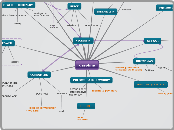Demand and Supply
To name your story, you have to think about the overall message and what you want your audience to understand from the story. Also, make it relevant and easy to remember.
Equilibrium
The ending of a story is essential. We all know that if the ending is weak, what happened before loses its importance. So make it unpredictable, but fair. A resolved ending answers all the questions and ties up any loose threads from the plot.
Price mechanism
This is the closure section of the story.
See examples of possible outcomes below:
- all problems have been solved
- it's clear how each one of your characters ends up
- your main character is transformed by the challenge
This changes the equilibrium as different factors eg price, advertising, population changes.
Try answering these questions to come up with a closure:
- Have all the problems been solved?
- Is there a clear picture of what happens with each character in the story?
- Has the challenge transformed your main character?
- How do the characters feel in the end?
What is this?
This is the moment when the main character surpasses the last obstacle and finally faces their greatest challenge.
The climax usually follows one of these patterns:
- realization
- resolution
- choice
Type in your answer.
The price at which quantity demand by consumers equals the quantity supplied by producers.
Supply
The middle of the story is where you add layers of complications that will lead to the end. Reveal more about the character's journey. Did their personality go through changes? How did they overcome the challenges? And as you build up the story’s central conflict, make it more personal to that character. Also, from the middle act, you have to lead into the final act.
Suppliers
There wouldn't be any tension and excitement in your story if there weren't any obstacles in your character's way.
Provide the good or materials to create the good to keep up with the consumer demand and to be sold on to the consumer
A story is nothing more than a character overcoming a series of difficulties to reach the desired goal. Obstacles usually create suspense and conflict. In overcoming obstacles, there is growth: weak becomes strong; hatred turns into love; sadness into happiness; wrong into right; lies into truth; or evil becomes good.
See a few examples below:
- stopping a meteor
- finding a killer
- finding love
Your character(s) need(s) motivation in order to solve the challenge(s).
Unplanned events
Government taxes
Technology breakthrough
Selling price of goods that producer could switch their production to.
Secondary characters also might have motivs beacuse of which they may cross path with main character or which might trigger them to help the main character.
Cost of production.
Secondary characters might also have motives that lead them to cross paths with the main character or which might trigger them to help the main character.
Price.
Why does your character need to confront this challenge? What does he/she expect to accomplish by solving it?
See a few examples:
- will marry in 3 days
- can fix the mistakes of the past
Shifts and movement on curves.
Each story has a main character and that character usually needs to solve a problem or challenge. The character's challenge is the one that creates tension throughout the story.
Movement
Due to change in prices
Subtopic
Shift
Type in any other challenges which other characters in the story need to face.
Due to change in all or any other factors bar price
Shift/movement
In most stories, there are 3 challenges. The number 3 is a mystical number symbolizing completeness. Try to come up with interesting challenges with which your character needs to struggle.
See a few examples below:
- turns into a werewolf at night
- is sent back in time
right is good
Left is bad
Demand
In the beginning of the story (or the exposition), you will need to introduce the setting and characters. You might also want to introduce the main conflict. This part of the story is important because it gives the reader necessary background information and maybe even a first insight into a character’s personality.
customers willingness and ability to buy a good
The setting (time & place) of a story can change throughout the plot.
Relationships
The time of the story can also change. It can describe the event of a single day or can include an entire year's plot. Anyway, don't forget to mention it.
Demand decreases
When price increases
Determinants
Your story can take place wherever your imagination will take you to.
For example: in an elevator, in an enchanted forest, etc. Don't forget to give details of the environment each time the setting changes, otherwise, the story can be confusing. Also, mention the seasons as each of them has unique weather and events.
Advertising (A)
Population (Pop)
Taste (T)
Income (Y)
Price complimentary (Pc)
Price substitute (Ps)
Price (P)










